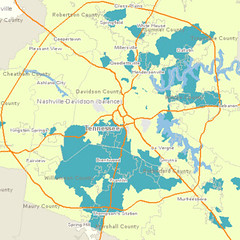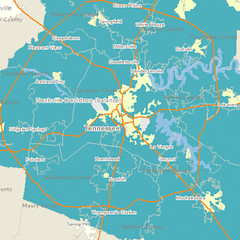How location affects home affordability, illustrated

Posted April 22, 2008 at 4:00AM
I'm on a roll, thinking about how home prices interact with location. The evidence is just ever more clear that smart growth locations deliver more value to the homeowner or homebuyer than we may have previously understood.
As I posted last week, new research announced by the Center for Neighborhood Technology (CNT) and the Brookings Institution demonstrates that, when considered with transportation costs, homes that may seem affordable in sprawling locations cost more than they seem. And Sunday and Monday I pointed out that smarter locations also appear to be holding their value better than sprawl, in part because the market is beginning to understand the hidden high costs associated with less accessible locations.
This is plainly illustrated by maps of metro regions available on CNT's website. Look below at the Nashville, Tennessee region. The map on the left shows, in pale yellow, the parts of the region where houses cost less than 30 percent of area median income, a standard figure used in mortgage calculations. Much of the region appears affordable. But the map on the right shows which properties are affordable when transportation costs are added in, so that housing and transportation together cost less than 48 percent of AMI. The difference is immense:
The inner, more convenient locations, along with those close to traditional centers of established suburban areas, remain affordable. But much of the outer areas no longer are.
The third map, below, shows what happens when we use 45 percent of AMI as our differntiating point, delineating in which locations average Nashville residents may find homes that are not just marginally affordable but more clearly so. The truly affordable portion of the map shrinks even further:
There is another body of research demonstrating that sprawl locations cost more to municipalities and taxpayers, because the costs of building and maintaining infrastructure go up on a per-unit basis in places that are more spread out. Now we know that the costs go up for consumers, too.
More on this subject may be found in an excellent blog post by Steve Davis of Smart Growth America, here. For additional research on Nashville, conducted by NRDC to evaluate the environmental performance of different locations in the region, go here.


